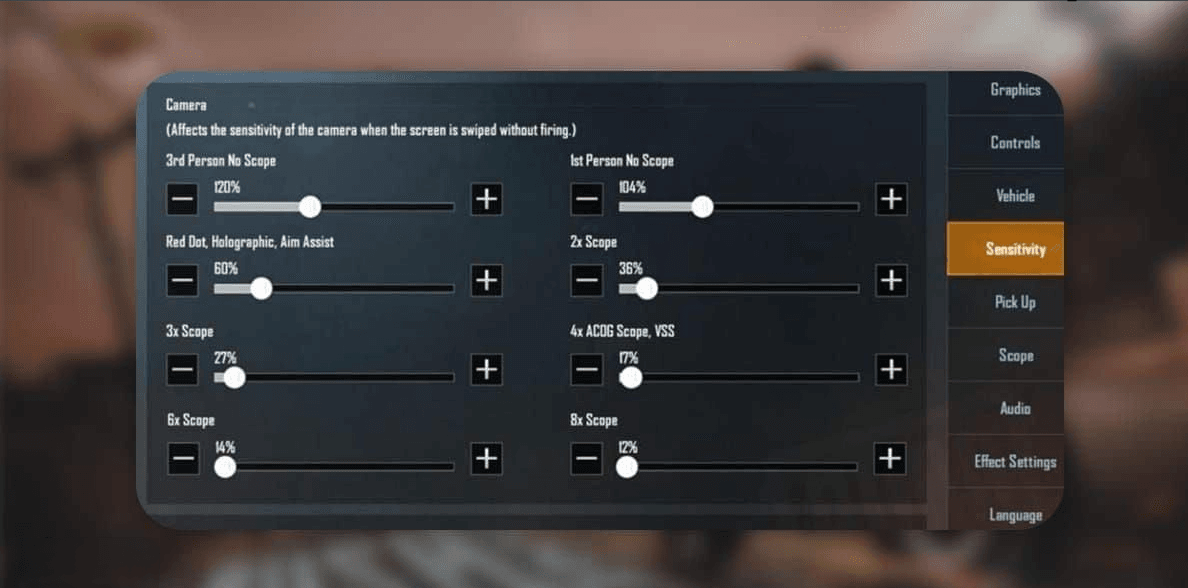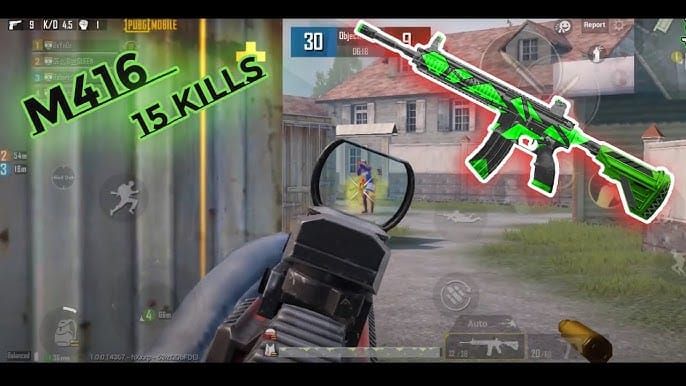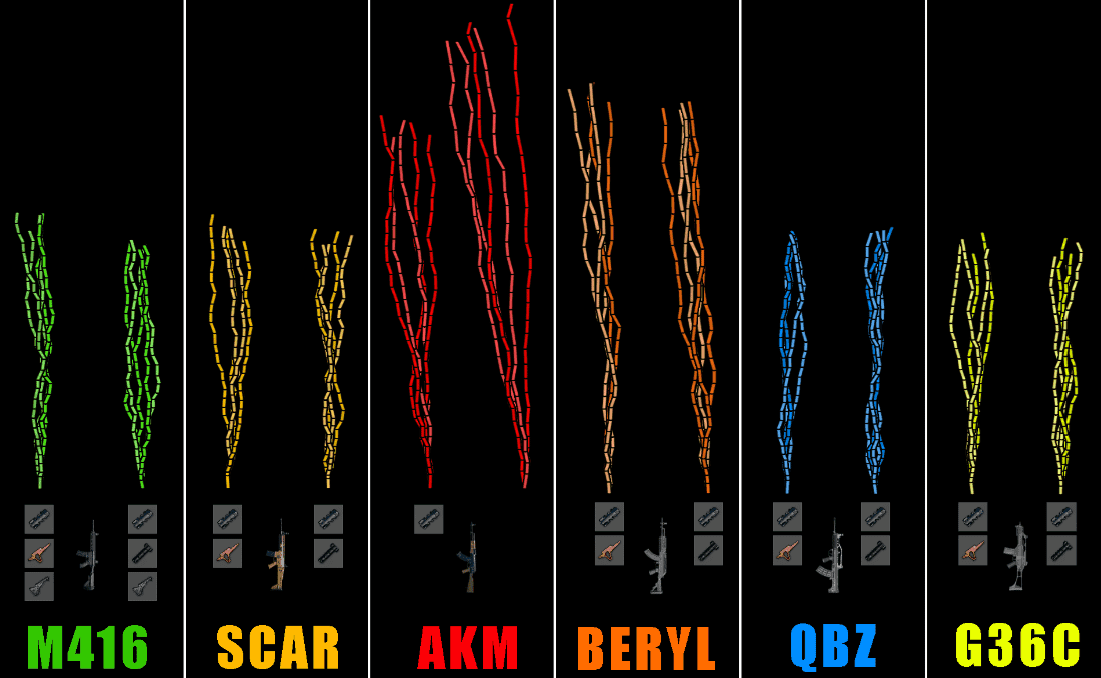What You Need to Know About PUBG Mobile Sensitivity Codes in 2025
Breaking Down Sensitivity Codes (It’s Simpler Than You Think)
Here’s the thing about sensitivity codes – they’re basically compressed save files for your entire control setup. When you see something like 1-7435-8846-3421-0303-0728, you’re looking at a complete configuration that covers everything from hip-fire camera movement to 8x scope precision.
Each segment of that code? It corresponds to different scope magnifications. Think of it as a recipe that tells your phone exactly how sensitive each aiming mode should be.

For competitive players who need consistent performance, PUBG UC instant top up keeps you equipped with premium features and battle passes. BitTopup delivers UC instantly with solid pricing and round-the-clock support – no waiting around when you need to gear up.
The Three Pillars of Sensitivity Settings
Camera sensitivity is your bread and butter. Most pros run 95-100% for third-person no-scope, then scale down: Red Dot at 45%, 2x scope at 30%, 4x at 18%, 6x at 14%, and 8x at 12%. Pretty straightforward progression.
ADS sensitivity follows a similar pattern but starts higher: No-scope ADS at 100%, Red Dot ADS at 50%, working down to 12% for 8x scopes. The key here is maintaining that proportional relationship.
Now, gyroscope sensitivity – this is where things get interesting. We’re talking much higher numbers: 300% for no-scope, 280% for Red Dot, scaling down to 100% for 8x. Gyroscope lets you tilt your device for micro-adjustments, and honestly? Once you get used to it, going back feels like playing with one hand tied behind your back.
Why This Matters for Competitive Play
I’ve watched Jonathan (yeah, the PMGC champion) play with his 4-finger claw setup, and his gyroscope values are insane – 300% for red dots, 236% for 3x scopes. But here’s what’s really impressive: he maintains 76% for 8x scopes, which gives him surgical precision at long range.
The numbers don’t lie either. Zero-recoil sensitivity configurations can improve your mid-range accuracy by 40-60% and cut ammunition waste by 25-35% during those extended firefights. Professional teams actually maintain entire libraries of codes for different hardware setups – because consistency across devices and updates is everything in competitive play.
How to Import Sensitivity Codes Without Losing Your Mind
Getting Your Setup Ready (Don’t Skip This Part)
Before you even think about importing codes, back up your current settings. Go to Settings > Controls > Layout > Share and generate your exportable code. Screenshot everything – and I mean everything. All sensitivity tabs, all values. Trust me on this one.
Clear your device cache and make sure you’ve got solid internet. Nothing’s worse than a failed import corrupting your settings halfway through.
Device prep matters too. Calibrate your gyroscope on a flat surface, optimize your graphics settings. Low-end devices should stick with Smooth graphics at 60 FPS, while high-end devices can push 90Hz or 120Hz with correspondingly higher sensitivity values.

The Import Process (Step by Step)
Navigate to Settings > Sensitivity > Cloud > Enter Code. Type the complete code sequence – all those hyphens and numbers matter. Don’t copy-paste; manually type it to avoid invisible character issues that can corrupt the import.
Once imported, head straight to Training Mode. Grab an M416 with compensator and vertical grip, find a 50-meter target, and test your spray patterns. This isn’t optional – it’s your reality check.

Post-import, you’ll probably need some tweaks. Start with 5-10% adjustments based on how it feels. Moving from thumb to claw grip? You’ll need higher sensitivity values. New to gyroscope? Start conservative with 200-300% baseline values and work your way up.
Making Sure Everything Actually Works
Training Ground verification is crucial. Set up at the 100-meter markers and practice spray control, moving target tracking, and scope transitions. Keep your crosshair at head level while doing 90-degree sweeps – if your sensitivity is dialed in, this should feel smooth and predictable.
Test with different weapons too. M416, AKM, Beryl M762 – each has different recoil patterns, and your sensitivity should handle all of them effectively.
Monitor your stats over 10-15 unranked matches before taking these settings into ranked. Watch your kill-death ratio, accuracy percentages, and damage-per-round. The numbers will tell you if your new settings are actually working.
Backup Strategies That Won’t Let You Down
Manual Backups (Old School But Bulletproof)
Screenshot every single sensitivity tab with all percentage values visible. Store these in cloud storage with date stamps – you’ll thank yourself later when you need to track down that perfect setup from three months ago.
Export sensitivity codes through Layout Share before every major update. Make it a habit, like checking your phone before leaving the house.
For seamless UC management during competitive seasons, check out this PUBG Mobile UC top up guide for optimal resource allocation. BitTopup handles secure payments, instant delivery, and competitive rates – no hassle, no waiting.
Cloud Backup Options
Enable automatic backup through Settings > Cloud > Sensitivity Backup. This keeps your configurations on remote servers, which is great until the servers have issues (and they will).
Cross-platform sync works pretty well between iOS and Android, but you’ll need to adjust for hardware differences. Screen size, refresh rate, touch sensitivity – they all matter.
Syncing Across Multiple Devices
Tablets need 15-20% higher sensitivity values compared to phones because of the larger screen real estate. 120Hz displays can handle more aggressive sensitivity settings thanks to improved input response, while 60Hz devices need more conservative approaches.
High-end processors support complex gyroscope combinations that would overwhelm budget devices. Know your hardware limitations and adjust accordingly.
When Updates Break Everything (Recovery Guide)
Preparing for the Inevitable
Export your codes 24-48 hours before major updates. Screenshot everything. Record manual values. Monitor official announcements for maintenance windows and avoid ranked matches during update rollouts.
If you can get into beta testing programs, do it. Otherwise, watch community feedback during initial rollouts to see what breaks.
Quick Recovery When Things Go Wrong
Settings > Sensitivity > Cloud > Enter Code – input your backup sequences and head to Training Mode for verification. When cloud import fails (and it will), use the repair function from the login screen. Select Restore Default Settings but uncheck everything else.
Sometimes you need the nuclear option: complete logout and repair, which gives you clean defaults to rebuild from.
Troubleshooting the Weird Stuff
Partial sensitivity corruption is the worst – some settings work, others don’t. Complete reset to defaults, then systematic reconfiguration using your backup documentation is usually the only fix.
When codes refuse to import, double-check the format including all hyphens and numbers. Verify your internet connection. Document error messages and contact support with detailed descriptions if problems persist.
Pro Player Codes That Actually Work in 2025
Championship-Level Settings
Jonathan’s setup is legendary for a reason: Camera TPP 95-100%, FPP 70-75%, ADS gyroscope 300% for Red Dot, 236% for 3x, 76% for 8x precision. ScoutOP takes a more balanced approach: Camera TPP 90-95%, FPP 85-90%, ADS Red Dot 55-60%, 3x 30-35%.
Try these proven codes: 1-7478-5115-3389-3888-854 and 1-7478-5115-3389-3888-855. Both are optimized for 2025 smartphone hardware with serious recoil control.

Device-Specific Considerations
iOS users need 10-15% higher sensitivity values across the board to compensate for platform differences. Android varies wildly by manufacturer – Samsung devices with high refresh rates can handle aggressive configs, while others need more conservative approaches.
Tablets require 20-25% higher sensitivity values with modified layouts for larger screens while maintaining competitive reaction times.
Regional Meta Differences
Asian pros favor high-sensitivity configs with heavy gyroscope integration for close-quarters combat. Europeans prefer balanced setups with moderate gyroscope for positioning and long-range work. North Americans tend toward hybrid approaches – high camera sensitivity with conservative ADS values.
Common Import Errors (And How to Fix Them)
Format Issues That Drive You Crazy
Valid codes follow specific patterns with numerical segments separated by hyphens, like 7307-1085-6780-4282-435. Always type manually rather than copying to avoid invisible characters that corrupt imports.
Major version changes sometimes break old codes entirely, requiring regeneration or manual recreation using documented values.
Device-Specific Problems
Older phones may reject codes with advanced gyroscope configurations. Generate simplified versions or manually adjust imported settings by 5-10% for platform-specific touch variations.
High-resolution displays often need 10-15% sensitivity increases compared to standard resolution devices for equivalent responsiveness.
Network Headaches
Strong Wi-Fi is non-negotiable for imports. Network interruptions corrupt sensitivity data, so attempt imports during off-peak hours when servers aren’t slammed.
Check server region compatibility or regenerate codes using local accounts when imports consistently fail despite correct format and stable connectivity.
Advanced Optimization Techniques
Gyroscope Mastery
Start with 200-300% baseline for no-scope, then scale down: Red Dot 280%, 2x 270%, 4x 160%, 6x 120%, 8x 100%. Use gyroscope for horizontal tracking while maintaining touch controls for vertical recoil compensation.
Assault rifles work great with moderate gyroscope integration (200-250%), while sniper rifles need minimal sensitivity (80-120%) to prevent overshooting during precise engagements.
Scope-Specific Fine-Tuning
Establish your no-scope baseline, then reduce proportionally: Red Dot 65-70% of baseline, 2x 45-50%, 4x 30-35%, 6x 20-25%, 8x 15-20%. Keep proportional relationships between camera and ADS values within each magnification.
Practice quick-scope sequences from Red Dot to 4x to 8x, adjusting values to minimize tracking disruption during scope switches.
Performance Impact Analysis
Record baseline metrics over 20-30 matches, then compare after optimization. Higher sensitivity can cause tracking instability on devices with inconsistent frame rates – you might need graphics optimization or sensitivity reduction.
High input lag devices need increased sensitivity to compensate for delayed response, while low-latency devices support more conservative configurations.
Device-Specific Configuration Guide
iOS Optimization
Bump baseline sensitivity 10-15% compared to Android to compensate for iOS touch calibration differences. iPhone Pro Max models need 15-20% higher values than standard iPhones due to screen size.
Monitor effectiveness after iOS updates and adjust incrementally to maintain consistency across system versions.
Android Customization
Samsung devices typically work with baseline values, while OnePlus devices may need 10-15% increases for equivalent responsiveness. 120Hz modes support 20-25% higher sensitivity thanks to improved input response.
Newer Android versions generally handle higher sensitivity values due to improved touch responsiveness and reduced input delays.
Hardware Reality Check
High-end processors handle aggressive sensitivity with complex gyroscope integration, while budget processors need simplified setups. Limited RAM devices may experience sensitivity degradation during peak moments – conservative values are safer.
SSD-equipped devices support higher sensitivity due to faster loading and reduced stuttering during gameplay transitions.
Tools and Resources for Sensitivity Management
Calculators and Conversion Tools
Professional sensitivity calculators handle precise conversion between different scales and device types, accounting for resolution, refresh rate, and platform differences. These tools translate values between measurement systems used by various gaming platforms.
Scaling tools adjust values based on device characteristics while maintaining familiar tracking feel.
Community Resources
Professional databases maintain tournament-proven configurations with detailed device specs and playstyle descriptions. Community repositories enable sharing and rating user-generated configs by device, playstyle, and skill level.
Regional databases reflect local meta preferences optimized for tournament formats.
Testing Methodologies
Establish baseline metrics including accuracy, reaction times, and K/D ratios before implementing changes. Use standardized testing routines: spray control, moving target tracking, scope transitions.
Monitor performance across multiple matches and game modes to validate effectiveness and guide future adjustments.
FAQ
How do I import sensitivity codes without errors in PUBG Mobile 2025? Go to Settings > Sensitivity > Cloud > Enter Code, type the complete code with hyphens, confirm import. Test immediately in Training Mode and backup your current settings first.
What should I do if my sensitivity settings reset after a major update? Use your backup code through Settings > Sensitivity > Cloud > Enter Code. If that fails, try the repair function from login screen – select Restore Default Settings only, restart, then manually reconfigure.
Which sensitivity codes work best for different devices in 2025? Low-end devices: 1-7435-8846-3421-0303-0728. High-end 120Hz devices: increase by 15-20%. iOS: add 10-15% to Android codes. Tablets: bump all values by 20-25%.
How do I backup my PUBG Mobile sensitivity settings effectively? Export via Layout > Share, screenshot all tabs, manually record values. Backup before every major update and store in cloud services with date stamps.
What are the best professional player sensitivity codes for 2025? Jonathan’s championship setup: Camera TPP 95-100%, ADS Gyro Red Dot 300%, 3x 236%. Try codes: 1-7478-5115-3389-3888-854 for balanced recoil control.
How do I fix sensitivity import failed errors? Verify complete code format, ensure stable internet, try during off-peak hours, manually type instead of copying, use repair function if failures persist.


















